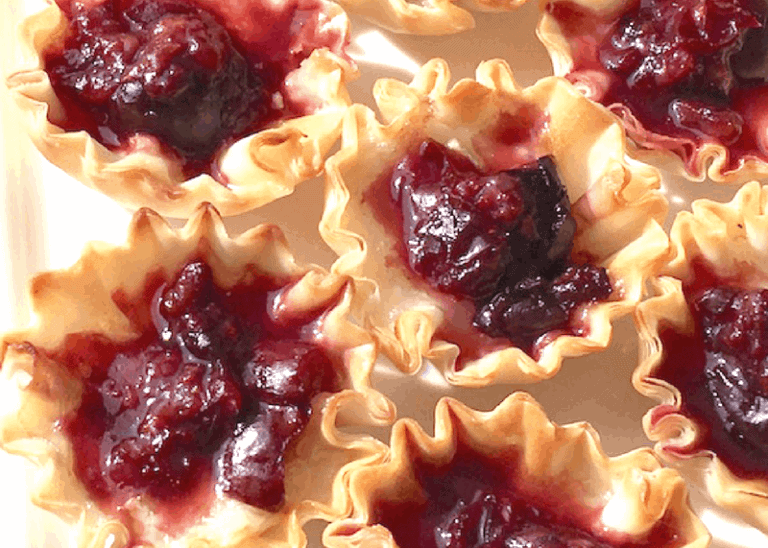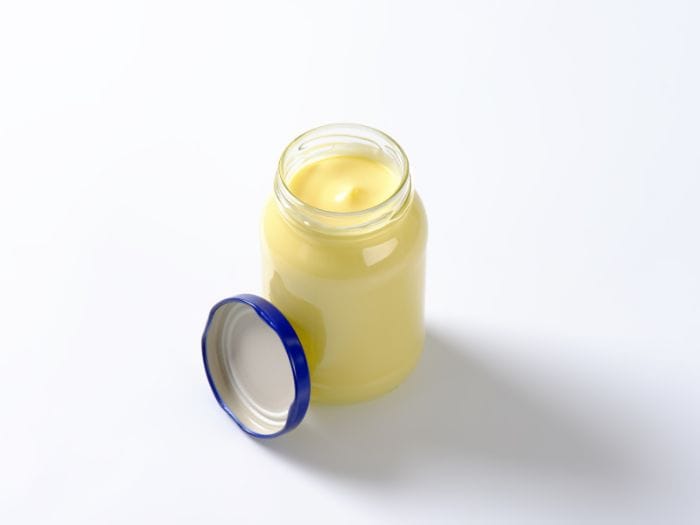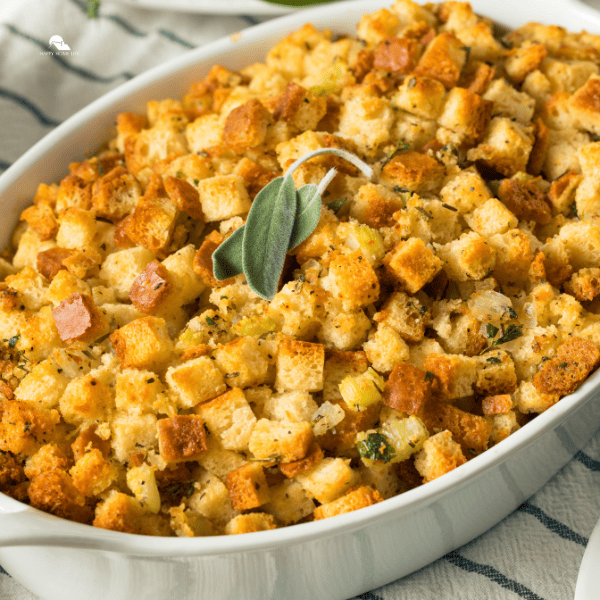Chicken salad is a popular dish that can be enjoyed in a sandwich, with crackers, over a bed of greens, and in many more ways. Whether you decide to make your own or purchase it from a store, one question that often comes up is how long does chicken salad last? The answer to this question depends on a few factors, including the ingredients used and how it has been stored.
According to the United States Department of Agriculture, cooked chicken should be used within three to four days and kept at 40°F or below. This recommendation can be applied to chicken salad as well, given that the main ingredient is cooked chicken. However, homemade chicken salad can last for up to five days in the refrigerator, depending on the ingredients used. Factors such as the freshness of the ingredients and how long the chicken has been sitting at room temperature can also impact the shelf life of the salad.

It’s important to note that store-bought chicken salad may have a sell-by date, but, of course, homemade chicken salad does not. Therefore, it’s crucial to pay attention to the ingredients used and how long it has been stored. Let’s explore how long chicken salad lasts, the factors that affect its shelf life, and tips for storing it properly to ensure its safety and freshness.
What Is Chicken Salad?
Chicken salad is a popular dish made from cooked chicken, usually mixed with mayonnaise or Miracle Whip and a variety of vegetables or veggies. It can be served as a sandwich filling, a salad, or as a side dish.
Homemade chicken salad can be a delicious and convenient meal option, but it’s important to understand how to properly store it to ensure it stays fresh and safe to eat.
Mayonnaise is a key ingredient in many chicken salad recipes, and it can also be a potential source of foodborne illness. To prevent bacterial growth, it’s important to keep chicken salad refrigerated at all times and discard any leftovers that have been left at room temperature for more than two hours.
Vegetables or veggies, such as celery, onions, and peppers, can add flavor and nutrition to chicken salad, but they can also contribute to spoilage if not stored properly. It’s important to wash and chop vegetables before adding them to the salad and store any leftovers in an airtight container in the refrigerator.
When making chicken salad, it’s important to use fresh ingredients and to follow food safety guidelines to ensure that the salad stays fresh and safe to eat. By understanding how to properly store and handle chicken salad, you can enjoy this delicious dish without worrying about foodborne illness.
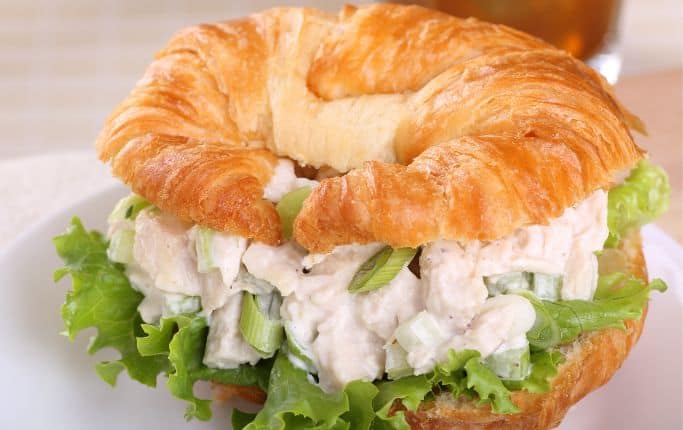
Shelf Life of Chicken Salad
Refrigerator
When properly stored in an airtight container in the refrigerator, chicken salad can last for 3 to 5 days. It is important to keep the temperature of the refrigerator at or below 40°F to prevent bacterial growth. If the chicken salad has been left out of the refrigerator for more than two hours, it should be discarded.
Room Temperature
Leaving chicken salad at room temperature for an extended period of time can increase the risk of foodborne illness. It is recommended to keep chicken salad refrigerated at all times. If chicken salad is left at room temperature for more than two hours, it should be discarded. If the temperature of the room is above 90°F, you should refrigerate it within one hour or discard it if it’s been longer than an hour.
Expiration Date
The expiration date on the chicken salad package is a good indicator of how long it will last. However, it is important to note that the expiration date is only accurate if the chicken salad has been stored properly. If the chicken salad has been opened, it is best to use it within 3 to 5 days.
Signs of Spoilage
It is important to inspect chicken salad before consuming it. If it has an off smell, strange texture, or unusual color, it should be discarded. Additionally, if there are any signs of mold, it should not be consumed.
In summary, the shelf life of chicken salad can vary depending on how it is stored and handled. It is important to keep it refrigerated and discard it if it has been left at room temperature for too long. Always check for signs of spoilage before consuming chicken salad.
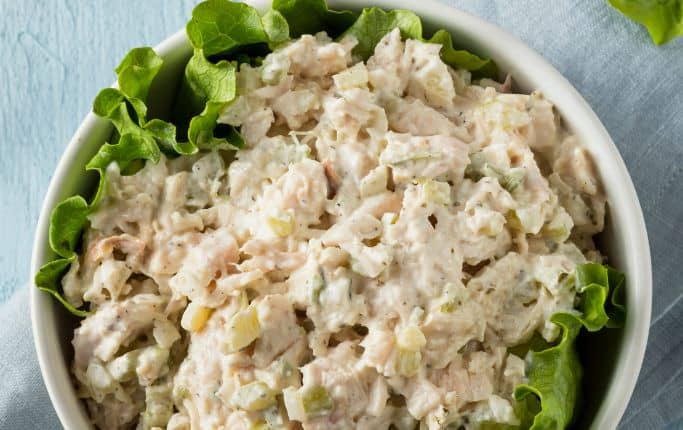
Signs of Spoilage
Chicken salad is a delicious and easy-to-make dish that can be enjoyed for several days if stored properly. However, if not stored correctly, chicken salad can become a breeding ground for bacteria and other harmful microorganisms that can cause food poisoning. Here are some signs that your chicken salad has gone bad:
Texture: One of the first signs that your chicken salad has gone bad is a change in texture. If the chicken salad has become slimy or mushy, it is a clear indication that it has gone bad.
Appearance: Another sign of spoilage is a change in appearance. If the chicken salad has become discolored or has developed a brownish tint, it is a clear indication that it has gone bad.
Mold: If your chicken salad has developed mold, it is a clear sign that it has gone bad. Mold can grow on the surface of the chicken salad or in the dressing, and it can be dangerous to consume.
Smell: If your chicken salad smells off or has a sour odor, it is a clear indication that it has gone bad. The smell of spoiled food is often the first sign that something is wrong.
It is important to note that if you notice any of these signs, you should not consume the chicken salad. Consuming spoiled food can lead to food poisoning, which can cause stomach cramps, diarrhea, and vomiting. If you are unsure whether your chicken salad has gone bad, it is always better to err on the side of caution and throw it away.
Safe Storage Practices
When it comes to storing chicken salad, it is important to follow safe storage practices to ensure that it stays fresh and safe to eat. Here are some tips on how to properly store chicken salad:
- Use an airtight container: An airtight container helps to keep the chicken salad fresh and prevents it from absorbing any odors from other foods in the refrigerator.
- Refrigerate promptly: Chicken salad should be refrigerated promptly after it has been made or purchased. Leaving it out at room temperature for too long can cause bacteria to grow, which can make it unsafe to eat.
- Store in the refrigerator: Chicken salad should be stored in the refrigerator at a temperature of 40°F or below. It is recommended to store it in the main part of the refrigerator rather than the door where the temperature is less consistent.
- Keep it in a cooler: If you are taking chicken salad to a picnic or outdoor event, it is important to keep it in a cooler with ice packs to keep it at a safe temperature.
- Check storage conditions: Always check the storage conditions of the chicken salad before eating it. If it has been left out at room temperature for more than two hours, it should be discarded.
By following these safe storage practices, you can help to ensure that your chicken salad stays fresh and safe to eat for as long as possible. Remember to always check the storage conditions of the chicken salad before eating it to ensure that it is still safe to consume.
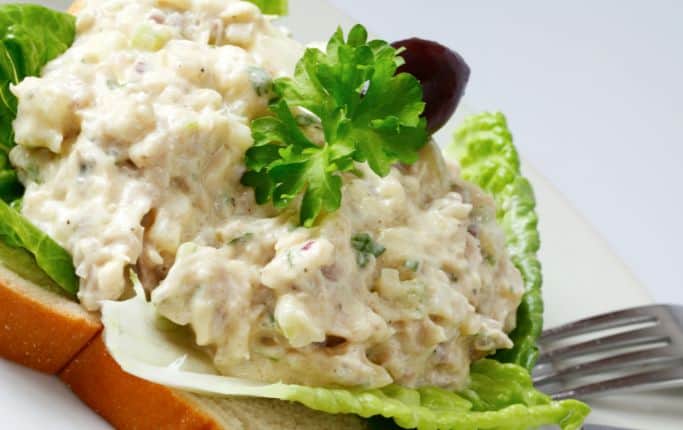
Impact of Ingredients on Longevity
The longevity of chicken salad depends on the ingredients used. Here are some common ingredients and their impact on the shelf life of chicken salad:
- Oil: Adding oil to chicken salad can extend its shelf life. Oil acts as a barrier that prevents air from reaching the chicken, which slows down the growth of bacteria. However, adding too much oil can make the chicken salad greasy and unappetizing.
- Leftover chicken: Using leftover chicken in chicken salad can reduce its shelf life. Leftover chicken may have been stored improperly or may have been exposed to bacteria during the cooking process. It is important to make sure that the chicken is cooked properly and stored at the appropriate temperature before using it in chicken salad.
- Cooked chicken: Using freshly cooked chicken in chicken salad can extend its shelf life. Make sure that the chicken is cooked properly and stored at the appropriate temperature before using it in chicken salad.
- Eggs: Adding boiled eggs to chicken salad can reduce its shelf life. Eggs are a potential source of salmonella, which can cause food poisoning. It is important to make sure that the eggs are boiled properly and stored at the appropriate temperature before using them in chicken salad.
- Tomatoes: Adding tomatoes to chicken salad can reduce its shelf life. Tomatoes are acidic, which can cause the chicken salad to spoil faster. It is important to make sure that the tomatoes are fresh and ripe before using them in chicken salad.
- Vinegar: Adding vinegar to chicken salad can extend its shelf life. Vinegar is acidic, which can slow down the growth of bacteria. However, adding too much vinegar can make the chicken salad sour and unappetizing.
- Pepper: Adding pepper to chicken salad does not have a significant impact on its shelf life. Pepper is a seasoning that adds flavor to the chicken salad, but it does not affect its longevity.
In summary, the ingredients used in chicken salad can have a significant impact on its shelf life. Adding oil and vinegar can extend its longevity, while using leftover chicken and boiled eggs can reduce it. It is important to make sure that all ingredients are fresh and stored properly before using them in chicken salad.
Freezing Chicken Salad
If you have leftover chicken salad that you won’t be able to consume within the next few days, freezing it is a great option to extend its shelf life. However, there are a few things to keep in mind before freezing chicken salad.
Firstly, it’s important to note that you should only freeze chicken salad that doesn’t contain mayonnaise as its primary ingredient. Mayonnaise has high fat and water properties, which can cause the ingredients in the salad to separate and give an odd taste when frozen. If your chicken salad has mayonnaise in it, it’s best to consume it within four days of making it or store it in the fridge for up to five days.
To freeze chicken salad, place it in an airtight container or a freezer-safe plastic bag. Make sure to leave a little room at the top of the container or bag to allow for expansion as the chicken salad freezes. Label the container or bag with the date it was frozen and place it in the freezer.
When you’re ready to consume the frozen chicken salad, remove it from the freezer and let it thaw in the fridge overnight. Do not thaw it at room temperature as this can cause bacteria to grow. Once thawed, give the chicken salad a good stir to redistribute any liquids that may have separated during the freezing process.
It’s important to note that freezing chicken salad can change its texture and taste. The vegetables in the salad may become mushy, and the dressing may become watery. However, if you’re willing to sacrifice a bit of texture and taste for an extended shelf life, freezing chicken salad is a great option.
Health and Safety Concerns
When it comes to chicken salad, health and safety concerns are a top priority. As with any food, there is a risk of foodborne illness if proper food safety guidelines are not followed. It is important to understand the risks associated with chicken salad and how to prevent them.
Bacteria is a major concern when it comes to chicken salad. According to the U.S. Department of Agriculture (USDA), cooked chicken should be used within three to four days and kept at 40°F or below to prevent the growth of harmful bacteria. To ensure that your chicken salad stays safe to eat, it is recommended that it be refrigerated within two hours of being prepared.
Using a food thermometer is also important to ensure that your chicken salad is cooked to a safe internal temperature of 165°F, as recommended by the Centers for Disease Control and Prevention (CDC). This will help to kill any harmful bacteria that may be present in the chicken.
It is important to keep raw chicken and its juices away from ready-to-eat foods, like salads or food that is already cooked. This will help to prevent cross-contamination and reduce the risk of foodborne illness.
To ensure that your chicken salad stays safe to eat, it is recommended that it be stored in airtight containers and consumed within three to four days of being prepared, according to FDA guidelines. If you are unsure whether your chicken salad is still safe to eat, it is better to err on the side of caution and discard it.
In summary, following proper food safety guidelines is essential when it comes to chicken salad. By refrigerating it promptly, cooking it to a safe internal temperature, and storing it properly, you can reduce the risk of foodborne illness and enjoy your chicken salad with peace of mind.

Chicken Salad for Events
Chicken salad is a popular dish to bring to events such as summer picnics, get-togethers, and potlucks. It is a versatile dish that can be served as a side dish or as a filling for sandwiches. However, it is important to ensure that the chicken salad is safe to eat, especially if it has been sitting out for a while.
When preparing chicken salad for an event, it is recommended to keep it chilled until ready to serve. If possible, bring the chicken salad in a cooler with ice packs to keep it at a safe temperature. Once at the event, keep the chicken salad in the cooler until it is time to serve.
If the chicken salad has been sitting out for more than two hours, it is best to discard it. Bacteria can grow rapidly at room temperature and can cause foodborne illness. It is better to be safe than sorry, so if in doubt, throw it out.
When serving chicken salad as a sandwich filling, it is recommended to assemble the sandwiches just before serving. This will prevent the bread from getting soggy and ensure that the chicken salad stays fresh.
In summary, chicken salad is a great dish to bring to events, but it is important to handle it safely. Keep it chilled until ready to serve, discard any leftovers that have been sitting out for more than two hours, and assemble sandwiches just before serving. By following these guidelines, you can ensure that your chicken salad is safe and delicious for everyone to enjoy.
Reheating Chicken Salad
Typically, chicken salad is eaten cold. However, some prefer their chicken salad warmed, so if that’s your preference, here are some tips for reheating it:
To reheat chicken salad, you can use an oven or a microwave. If using an oven, preheat it to 350°F and place the chicken salad in an oven-safe dish. Cover the dish with foil and bake for 10-15 minutes, or until heated through.
If using a microwave, transfer the chicken salad to a microwave-safe dish and cover with a microwave-safe lid or plastic wrap. Microwave on high for 1-2 minutes, stirring occasionally, until heated through.
It’s important to note that reheating chicken salad may cause the texture to change, especially if it contains mayonnaise. The mayonnaise may separate or become oily, which can affect the taste and appearance of the chicken salad.
To prevent this, you can add a little bit of fresh mayonnaise or another dressing to the chicken salad before reheating. This can help to keep it moist and prevent it from drying out.
In conclusion, reheating chicken salad is safe as long as it has been stored properly and reheated to the appropriate temperature. However, it’s important to keep in mind that the texture and taste may be affected, especially if it contains mayonnaise.
Frequently Asked Questions
Can chicken salad be frozen?
Yes, chicken salad can be frozen. It is best to freeze chicken salad without any mayonnaise or other dairy-based dressing, as these can separate and become watery when thawed. Instead, freeze just the chicken and other salad ingredients in an airtight container or freezer bag. When you are ready to use the chicken salad, thaw it in the refrigerator overnight and add the dressing just before serving.
How can you tell if chicken salad is still good?
You can tell if chicken salad is still good by checking its appearance, smell, and taste. If the chicken salad looks slimy or has an off color, it is likely spoiled. If it smells sour or rancid, it is also likely spoiled. If you are unsure, take a small taste. If it tastes off or has a strange texture, it is best to discard it.
What makes chicken salad go bad?
There are several factors that can make chicken salad go bad, including exposure to air, temperature, and the ingredients used. Chicken salad should be kept refrigerated at all times and consumed within 3-5 days of preparation. If any of the ingredients used in the salad are past their expiration date or have been contaminated, this can also cause the chicken salad to spoil.
How long is homemade chicken salad good for in the refrigerator?
Homemade chicken salad is good for 3-5 days in the refrigerator when stored in an airtight container. It is important to keep the chicken salad refrigerated at all times and to discard any leftovers that have been left out at room temperature for more than 2 hours.
What are the risks of eating old chicken salad?
Eating old chicken salad can lead to food poisoning, which can cause symptoms such as nausea, vomiting, diarrhea, and stomach cramps. In severe cases, food poisoning can require hospitalization. It is important to always discard any chicken salad that is past its expiration date or has been left out at room temperature for too long.
How long can chicken salad be left out before it goes bad?
Chicken salad should not be left out at room temperature for more than 2 hours. Bacteria can grow rapidly at room temperature, which can cause the chicken salad to spoil and become unsafe to eat. Always refrigerate chicken salad as soon as possible after preparation or purchasing.
Images of chicken salad via Canva Pro at Canva.com

